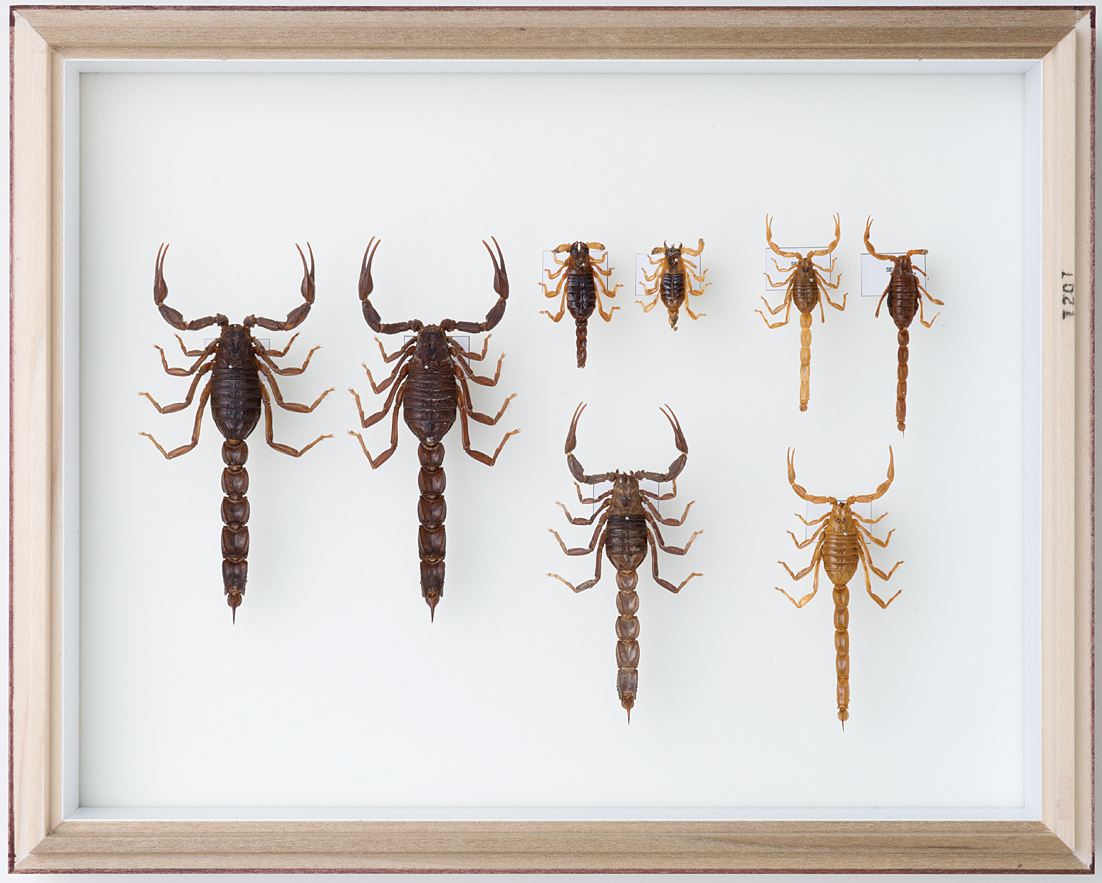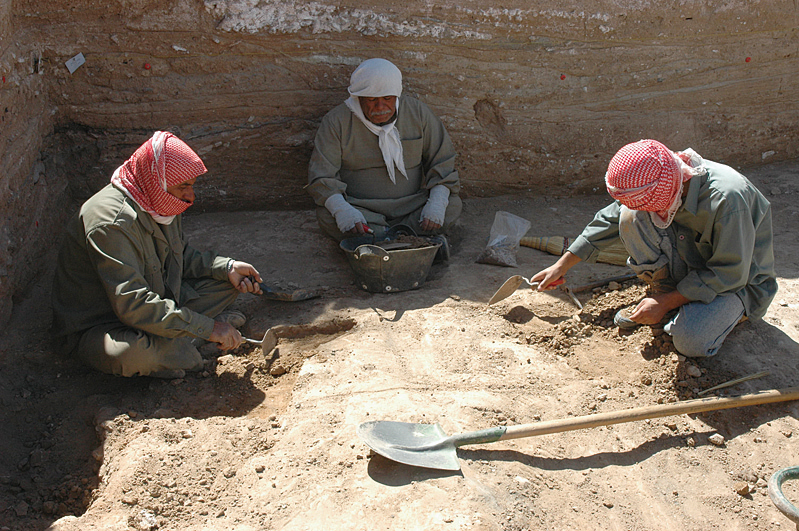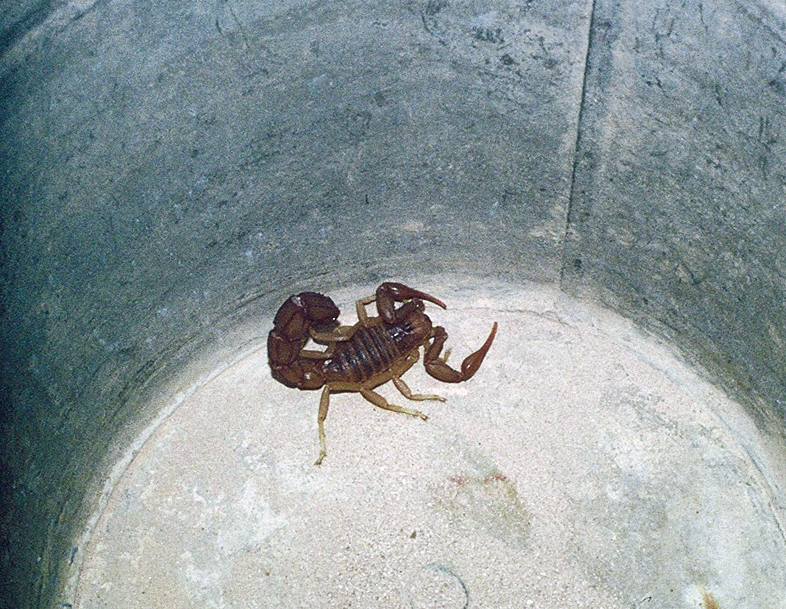C10
Dangerous creatures encountered by archaeologists
scorpions in western Asia
Archaeologists conducting fieldwork in western Asia, especially in arid regions, routinely encounter scorpions during excavations. Successful fieldwork requires understanding the habitat of scorpions, creatures that might seriously affect the expedition when attacked.
Scorpions are nocturnal and fossorial; they seek shelter during the day in the relatively cool environment of underground holes or underneath rocks, and emerge at night to hunt and feed. They are opportunistic predators of small arthropods, while most are known to exhibit photophobic behavior, primarily to evade detection by natural enemies such as birds, rats, lizards, and centipedes. The first day of excavation is therefore the most dangerous for archaeologists who may be attacked by scorpions hiding below the surface.
Scorpions on display were collected during excavations of Tell Seker al-Aheimar in Syria, and Telul eth-Thalathat in Iraq, for educational purpose for field archaeologists. Syrian scorpions are assigned to the genus Androctonus of the family Buthidae, while those from Iraq, consisting of young scorpions only, are assigned to the Buthidae (identified by Dr. Kazunori Yamazaki). Androctonus species are one of the most dangerous scorpion groups in the world. Their venom contains powerful neurotoxins known to cause several human deaths each year. (Yoshihiro Nishiaki & Masaya Yago)
References
Hendrixson, B. E. (2006) Buthid scorpions of Saudi Arabia, with notes on other families (Scorpiones: Buthidae, Liochelidae, Scorpionidae). In: Büttiker, W. et al. (eds.) Fauna of Arabia 21: 33–120. Basel: Karger Libri.



